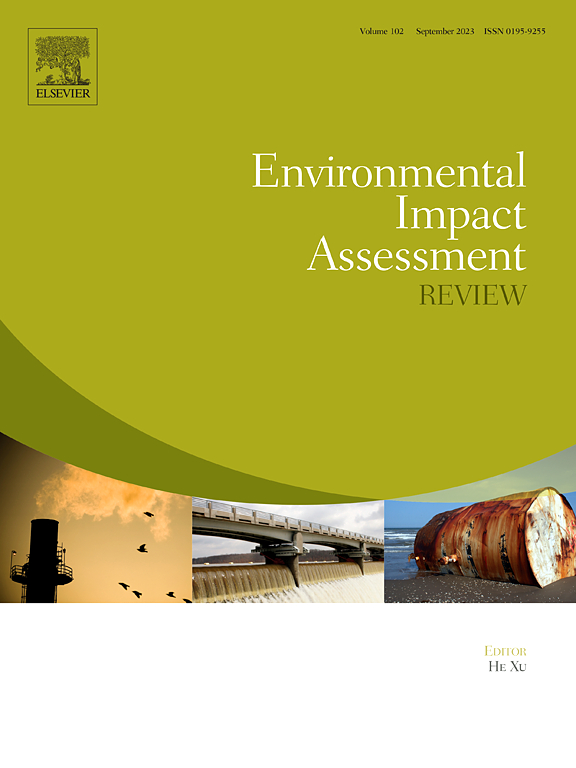1992-2019 年期间中亚粮食安全的变化以及基于自给自足的不同情景下的潜力评估
IF 9.8
1区 社会学
Q1 ENVIRONMENTAL STUDIES
引用次数: 0
摘要
近年来,由于国际事件频繁中断贸易,全球粮食安全状况持续恶化。提高粮食自给自足已受到广泛关注。中亚作为人均土地资源丰富的地区,在实现粮食自给自足、促进全球粮食安全方面具有一定的粮食生产潜力。然而,很少有研究考察该地区粮食自给能力的变化及其潜力。本研究从粮食自给的角度出发,采用土地承载能力(LCC)评估方法,分析1992 - 2019年中国及东盟国家的粮食安全变化,基于FAOSTAT数据库,评估不同农业生产力水平、粮食与营养消费水平等多种情景下的粮食安全水平。结果表明:除塔吉克斯坦(TJK)外,中国、哈萨克斯坦(KAZ)、吉尔吉斯斯坦(KGZ)、土库曼斯坦(TKM)和乌兹别克斯坦(UZB)实现了粮食自给。在此期间,CA和KAZ的粮食自给能力呈先下降后上升的波动趋势;KGZ和TJK表现出相似的上升趋势,但经历了两次较大波动;TKM的变化趋势与UZB相似,但后者的波动幅度小于前者。在LCC压力指数(LCCPI)方面,除TJK有43%年份低于“松弛平衡”水平外,1992 - 2019年,CA和5个国家普遍高于“富裕”水平。对CA来说,2009年以前的限制因素主要是能量不足,2009年以后的限制因素主要是脂肪不足。在国家层面上,限制因子为KAZ的脂肪,TKM和UZB的能量,KGZ和TJK的大部分年份的能量和最近几年的脂肪。农业生产力和农业结构的变化直接影响着中亚国家LCC的变化,但政治因素是影响LCC变化的深层原因。情景分析表明,随着粮食营养消费升级,中亚国家将面临粮食不安全的挑战。但是,除了土地资源有限的KGZ和TJK,这些挑战可以通过提高农业生产力和调整农业结构来解决。加强国际合作(土地和水资源的共同开发、农业技术交流、区域内贸易等),探索合理的作物种植结构和可持续的消费模式是提高中亚地区粮食自给能力的必要条件。本文章由计算机程序翻译,如有差异,请以英文原文为准。
Food security changes in Central Asia during 1992–2019 and potential assessment in different scenarios based on self-sufficiency
The global food security continued to deteriorate in recent years due to frequent international events interrupting trade. To rise food self-sufficiency has been regarded widely. Central Asia (CA) as a region with rich land per capita has a certain food production potential to achieve self-sufficiency and promote global food security. However, few studies examine food self-sufficiency ability changes and potential in this area. From the perspective of food self-sufficiency, this study adopted the land carrying capacity (LCC) assessment methods to analyze food security changes in CA and countries in it from 1992 to 2019 and to evaluate the food security level under multiple scenarios covering different agricultural productivity levels and food and nutrition consumption levels based on the FAOSTAT database. The results show that CA, Kazakhstan (KAZ), Kyrgyzstan (KGZ), Turkmenistan (TKM), and Uzbekistan (UZB) realized food self-sufficiency except Tajikistan (TJK). During this period, food self-sufficiency ability of CA and KAZ rapidly declined first and then increased with fluctuation; KGZ and TJK showed a similar rising trend but experienced two big fluctuations; TKM has a similar changing trend to UZB, but the latter's fluctuation range was smaller than the former's. In terms of the LCC pressure index (LCCPI), CA and the five countries were generally above the level of “affluence” from 1992 to 2019 except TJK that 43 % years was below the level of “slack balance”. For CA, the main limiting factor is energy insufficiency before 2009 but fat insufficiency since that year. At the country level, the limiting factor is the fat for KAZ, the energy for TKM and UZB, and the energy in most years and the fat in the last several years for KGZ and TJK. Agricultural productivity and structure changes directly influenced the LCC changes of CA countries, but political factors were the underlying cause for the change. Scenario analyses show that CA countries will face challenges from food insecurity with food nutrition consumption upgrading. But, these challenges can be addressed by improving agricultural productivity and adjusting agricultural structure except KGZ and TJK with limited land resources. This study presents reinforcing international cooperation (joint development of land and water resources, agricultural technology exchanges, intra-regional trades, etc.) and exploring reasonable crop planting structure and sustainable consumption patterns are necessary for improving food sufficiency ability in CA.
求助全文
通过发布文献求助,成功后即可免费获取论文全文。
去求助
来源期刊

Environmental Impact Assessment Review
ENVIRONMENTAL STUDIES-
CiteScore
12.60
自引率
10.10%
发文量
200
审稿时长
33 days
期刊介绍:
Environmental Impact Assessment Review is an interdisciplinary journal that serves a global audience of practitioners, policymakers, and academics involved in assessing the environmental impact of policies, projects, processes, and products. The journal focuses on innovative theory and practice in environmental impact assessment (EIA). Papers are expected to present innovative ideas, be topical, and coherent. The journal emphasizes concepts, methods, techniques, approaches, and systems related to EIA theory and practice.
 求助内容:
求助内容: 应助结果提醒方式:
应助结果提醒方式:


